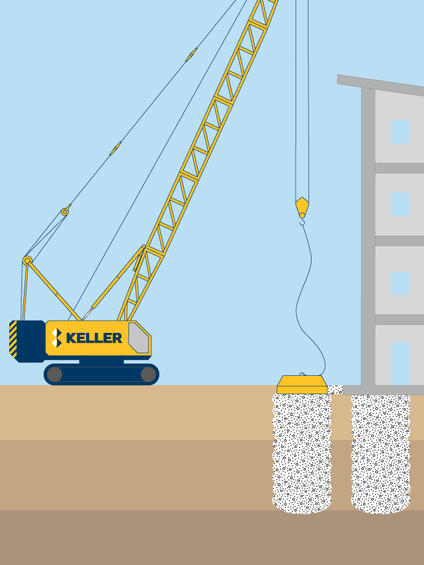Dynamic replacement is a variation on dynamic compaction and uses the energy of a falling weight to drive large diameter granular columns into cohesionless soils and fills.

Common uses
Increase bearing capacity
Decrease settlement
Mitigate liquefaction
Reduce sinkhole potential
Process
Selected material is driven in to partially or completely displace the in-situ material to form columns of compacted material. A surface blanketing layer consisting of compacted selected material then transfers the load to these compacted columns.
Advantages
Capable of compacting a wide variety of weak soils
Increased bearing capacity
Reduced settlement
Treated granular soils and fills have increased density, friction angle, and stiffness.
Can improve soil conditions on marginal sites to extent that shallow foundations can be used without deep excavation or piling
Removal of compressible, contaminated fills can sometimes be avoided